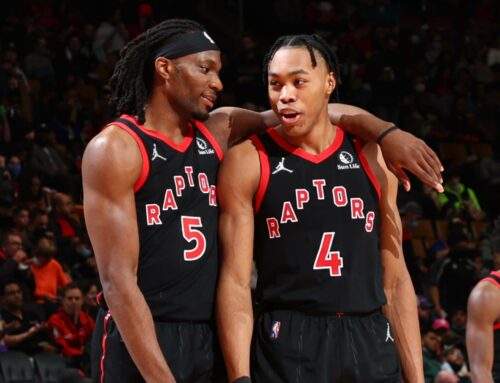The problem with bad habits is how natural they feel. They are easy to rely on and hard to recognize.
Bad basketball habits are no different. We know we are supposed to follow our shot and not reach and box out. But when we are unaccustomed to doing something – especially when tired or competing in an intense environment – instinct takes over, and we forget our training. Just ask J.R. Smith.
Habits form as a result of efficiency. Our psychology guides us towards actions that are easy, familiar, or successful. We did it, it was good, let’s do it again. In sports, you win or you lose. If you win, by good habits or bad, the feedback loop confirms doing what worked again.
For example, if we always score when we go left, why bother practicing right? The problem, of course, is that eventually your opponent will figure it out. We are exposed with no way to adapt.
To succeed as a basketball player, we need to find our bad habits and eliminate them.
Spotting Bad Habits
Previously, we talked about finding weaknesses through data and reflection – recognizing flaws is difficult but important! – and we can do the same with bad habits.
Recording statistics (points, fouls, assists, etc.) generally shows your impact on a game and performance over the course of a season. Advanced analytics help you drill down further to determine your effectiveness.
That information highlights areas where bad habits may hide. Are your statistics high, but your efficiency low? Do you shoot from limited spots on the court? Is your offence great, but defence poor?
Then, to pinpoint individual bad habits, we need a second set of eyes.
Ask coaches – they love sharing knowledge and helping players – to look at your data and to give feedback after you play. They might tell you that your shooting percentage is low because of shot selection or shooting mechanics. They might say you are not low enough in your defensive stance or that you overplay passing lanes. Things you may think you do well actually hold you back.
If you don’t have a coach yet, work with your friends. After pick-up or a set of drills, take some time to speak honestly and humbly about what you saw – the good and the bad.
Fixing and Preventing Bad Habits
Ya, ya, ya, practice makes perfect. We hear it alllll the time.
But the cliche is inaccurate. Smart practice makes perfect.
If we go to the gym, and put up shots and dribble around aimlessly, come game time, we’ll get smoked. It is not enough to just practice. We need to focus on particular skills.
Find drills – there are lots of them – to start at the basics. Even if they feel easy, repetition of simple drills builds the foundation for more difficult ones. Shortcuts will not solve bad habits. At first, these drills will feel difficult and uncomfortable (there will be a lot of chasing the ball around the gym). Messing up and trying again is the first step to building good habits.
Drills do not have to be complicated either. Kyrie Irving attributes his touch to doing the Mikan Drill over and over again, adding more difficult layers as he goes.
And, as always, track your progress. As the drills get easier – and by easier I mean you can do them correctly and quickly – increase the volume and difficulty.
Habits die hard. Breaking them requires active and constant change. Eventually, instinct will turn to those new habits and winning will come all the more naturally. Just ask Ray Allen.





